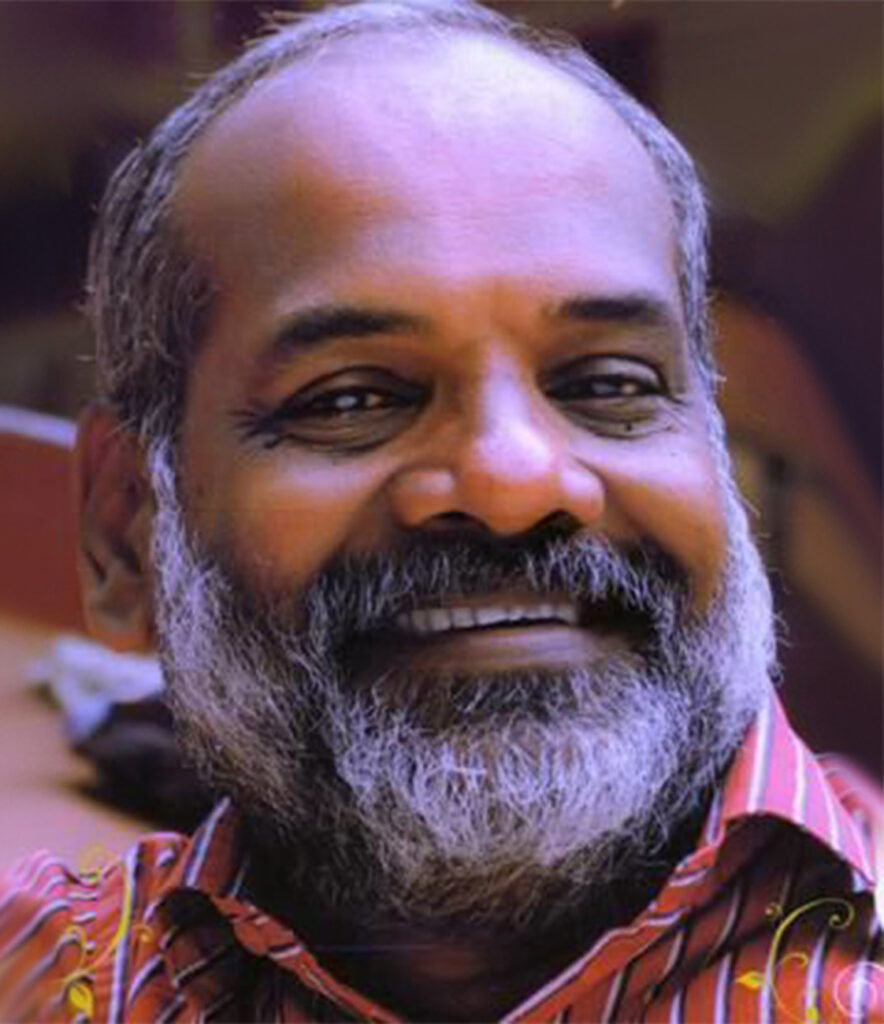P. Surendran / Art Critic

Although widely known for his illustrations, recent works of Chans a.k.a Chandrashekharan prove that for him colour is as eminently pliable as any other medium. The exhibition held at Kozhikode revealed various aspects of his artist persona. It mapped his early illustrations in black, works in colour sharing close affinities with painting, graphic artworks etc.
Chandrashekharan’s illustrations started appearing in Deshabhimani at a time when visual art in the illustrations of of A.S. and Namboothiri was radically transforming the visual engagement of Malayalees. Chandrashekharan found his own place by whisking himself away from these ‘Paramashivas’ (V.K.N. coined this phrase for Namboothiri). The measure of resistance was very prominent in his work. The live depiction of people driven to the margins. In his sketches, tolerance and revolt appeared alongside each other. State repression, violence against women, the problems of the dispossessed, land struggles… In a broad sense, these works can be called depictions of Dalit life. The reason for such a thematic milieu is intertwined with the political posturing of the weekly that he worked for. In the protest site of words, these works turned out to be revolting lines. And it distinguished itself from the illustrations of Namboothiri and A.S. An anthropocentric ideology steered him. His mind was never weary drawing human beings. Even his backdrops for human figures were devoid of animals, birds and plants. He also stayed away from signaling at the ground that supported his human figures.

Chandrashekharan’s human figures are tall. When his human beings feature against the backdrop of buildings and the like, he makes them look taller than the buildings by the use of a distinctive out of proportion technique. Companionship becomes fellow feeling. The changes in mannerism from line art to ink art is also quite fascinating. The sketches are toned down. They share the traits of works in water colour. Meticulous application of colour and nimble lines create a spectacular vision. The artist’s felicity with regard to water colour is admirable. Water colour is commonly used for natural scenery. But even here Chandrashekharan sticks with human beings. The technical quality of such works is compromised when weeklies carry them in print. One has to see them directly to believe.
Chans’s recent works are predominantly graphic. He was certainly celebrating the freedom that came with the advent of computers. However, he hasn’t changed with regard to the predominant conception of human beings. Though the precision that governed his illustrations of human figures is omitted in graphic works. The prominence enjoyed by colour in this medium lends an ethereal glow to these works. These images appear as though they are in animation.
Madhyamam (Newspaper India) 2005